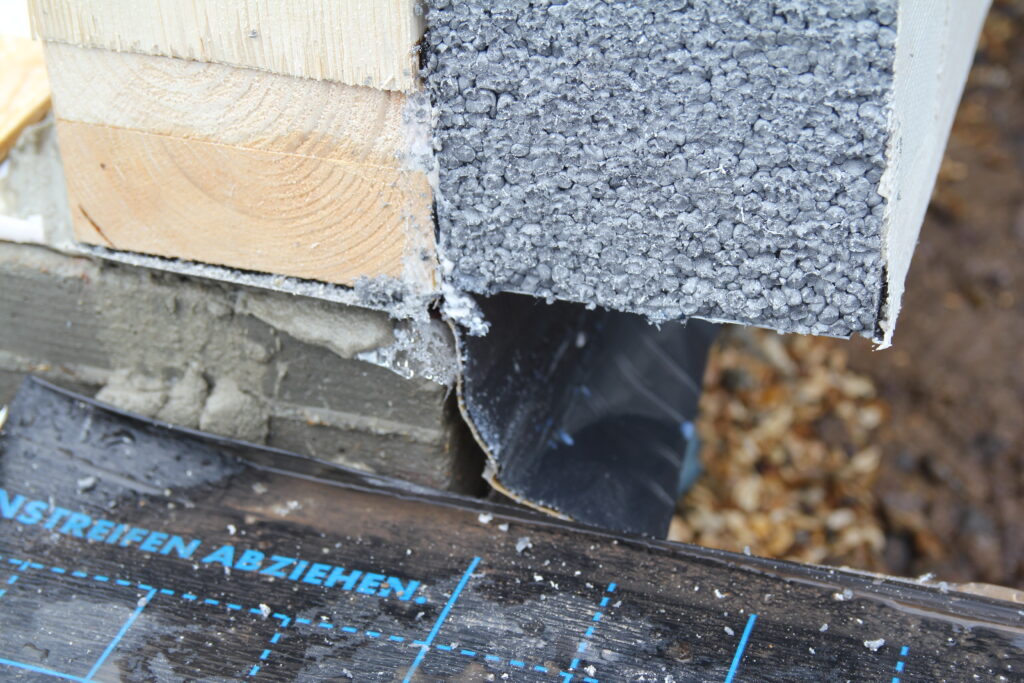U-values are a key part of energy assessments. Reducing the heat loss through the elements means less heating demand and fewer CO2 emissions.
For more information on U-values in general, please see our previous blog. In this article we will be looking at achieving U-values in residential schemes and within your SAP Calculations.
For floors, walls and roofs, we recommend meeting or improving on the reference U-values in SAP. A reference U-value is used in the ‘notional dwelling’ when calculating the Target Emission Rate (TER). In theory, meeting all these reference values will result in a pass, however some reference values are very hard to meet (such as thermal bridging, opening areas and number of extract fans) so it’s not guaranteed – that’s why a design stage SAP assessment is essential.

A modular wall detail
Element Reference U-value
Floor 0.11 W/m2K
Wall 0.18 W/m2K
Roof 0.13 W/m2K
Wall U-values
Here we will look at the most common scenario – cavity walls. We will be covering other wall types in this series of articles.
To meet 0.18 W/m2K, cavity walls will need either a full-fill cavity, additional internal insulation or have a cavity greater than 100 mm.
Full-fill options
For full-fill insulation, there are a few options:
- 90mm Kingspan Kooltherm K106 (this can actually achieve better U-values of 0.16/0.17)
- 100mm Xtratherm Thin-R+ CavityTherm
- 97mm Celotex CF5000 (this is temporarily suspended at the time of writing)
This assumes a low-density block (conductivity 0.18 W/mK or less) is used.
These full-fill insulation boards are not certified for use in very severe exposure (of wind driven rain) locations with fair-faced masonry. Therefore, if the building is in a very severe exposure zone, the wall will need an external render or cladding, or a partial fill option must be used instead. Please note that full-fill cavities are not permitted in Scotland in any case.
Full fill mineral wool has a poorer conductivity than those mentioned above, so 100 mm won’t achieve 0.18 W/m2K. For example, it would take 150mm Knauf DriTherm Cavity Slab 32 Ultimate to achieve 0.18 W/m2K.

From NHBC Standards 2010
Partial fill options
If using a partial fill cavity (usually with a 50mm clear residual cavity), these are some options to achieve 0.18 W/m2K:
- 125mm cavity with 75mm Kingspan Kooltherm K108
- 150mm cavity with 100mm insulation at conductivity 0.022 W/mK
This assumes a low-density block (conductivity 0.18 W/mK or less) is used.
All of the above insulations are a guide and U-value calculations should always be carried out as soon as possible to ensure the required U-value will be met. U-value calculations will also be required by your SAP assessor as evidence.
Check out the online calculators on the Celotex and Kingspan websites. Your SAP Assessor should also be able to carry out U-value calculations for the scheme if required. You will need to provide details of the materials used including thicknesses, make and model of insulation, and state whether any insulation layers are bridged by other materials such as timber studs or joists.
Would you like to discuss your project?
Call us on 0330 055 43 05 or email be@buildenergy.co.uk.
